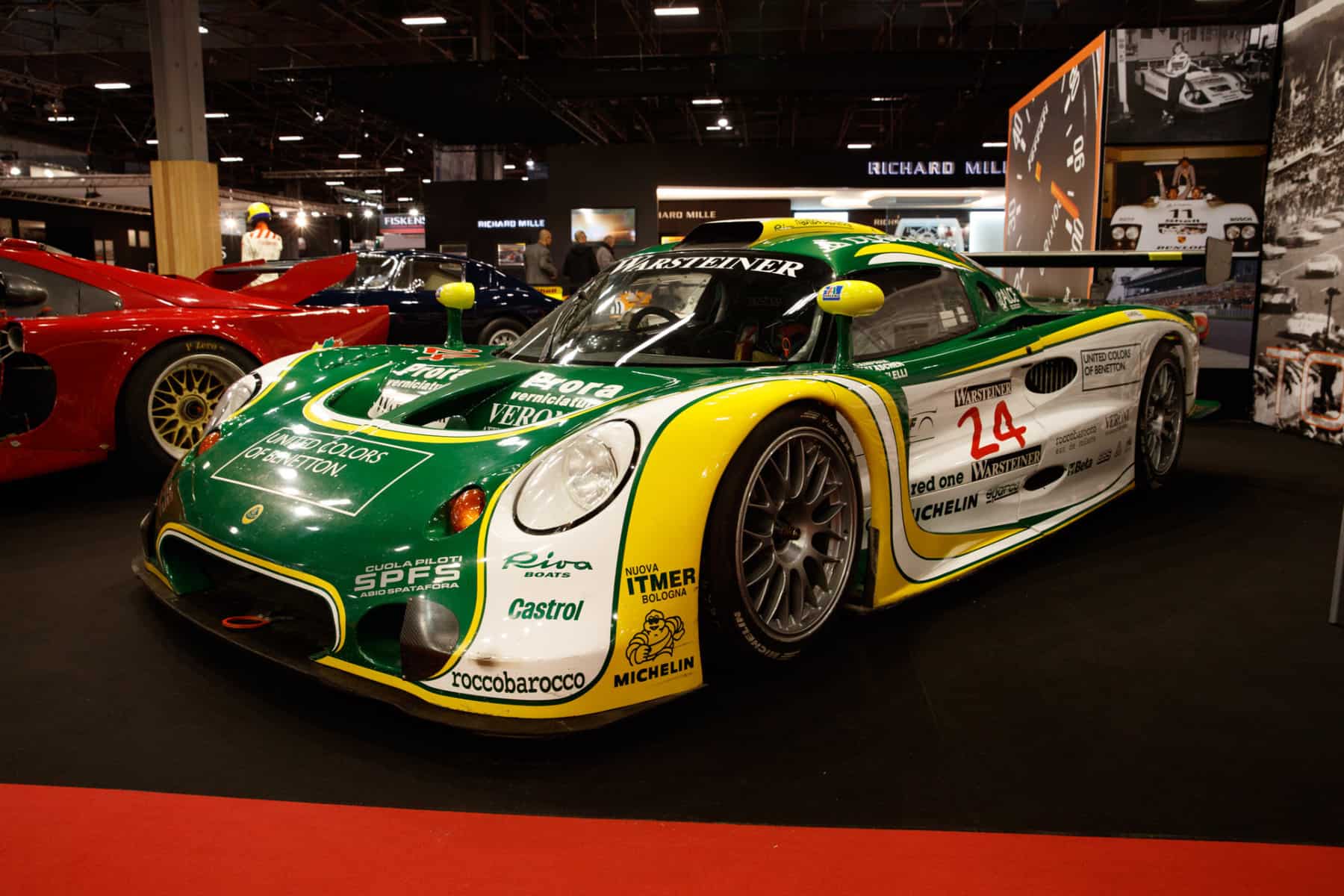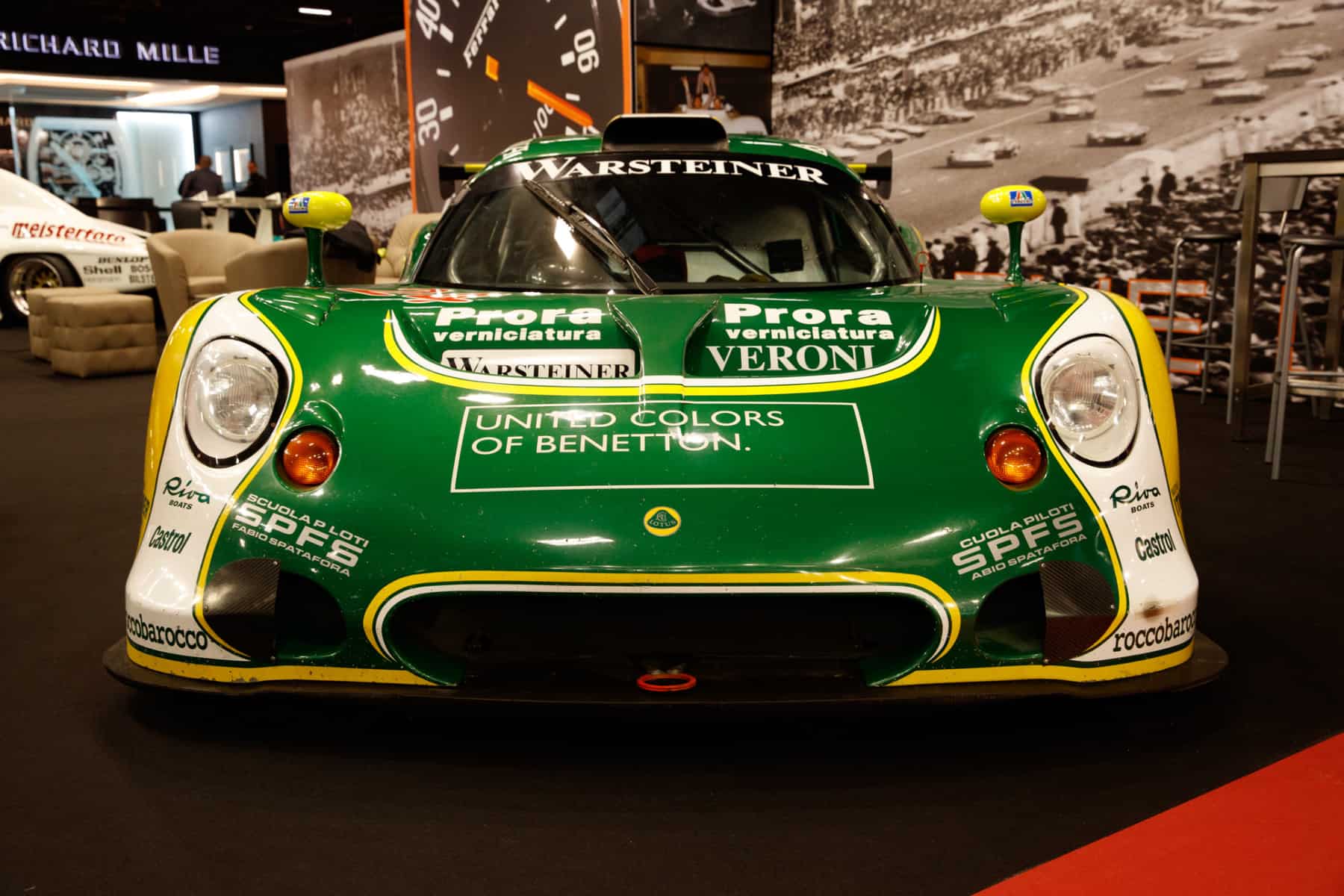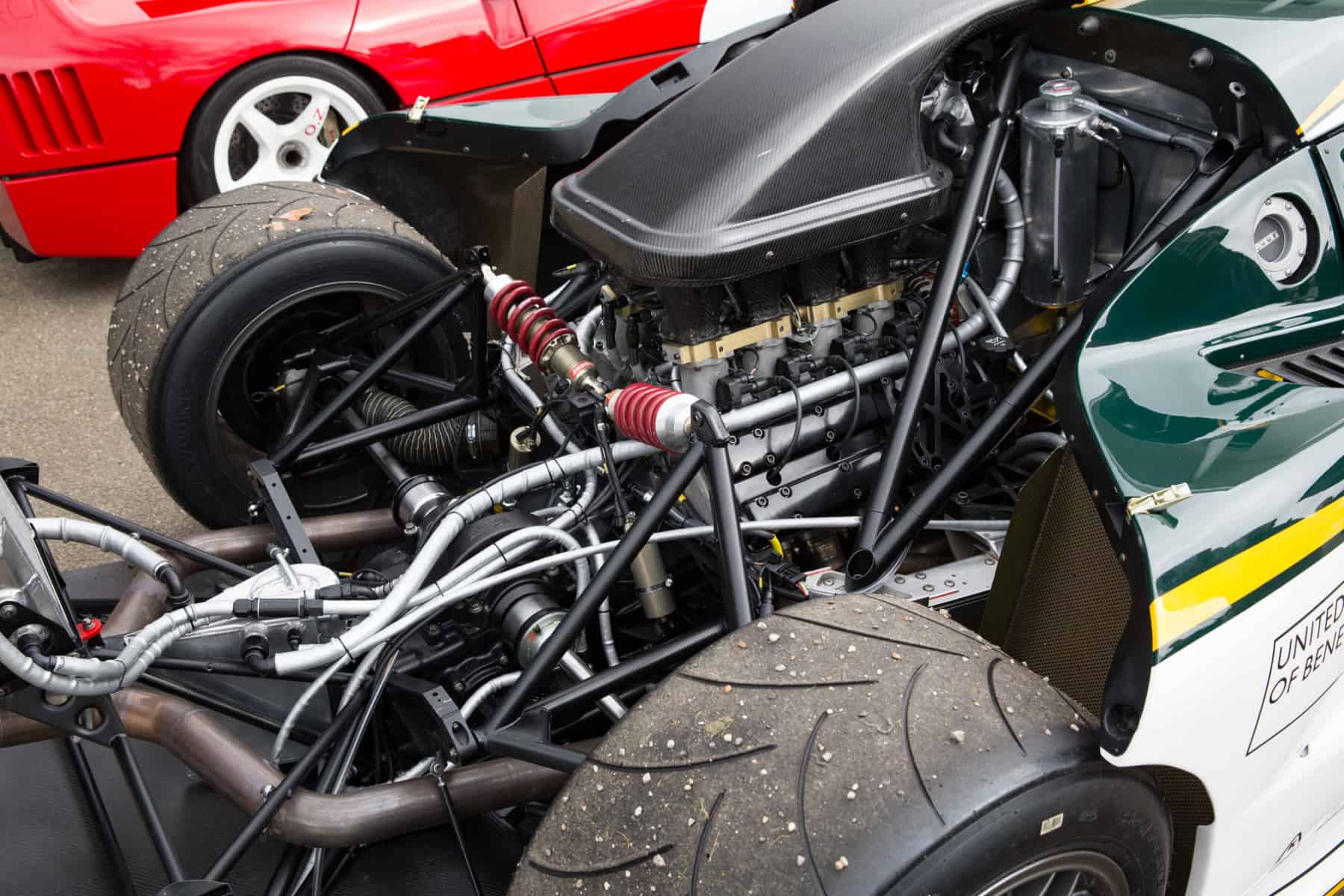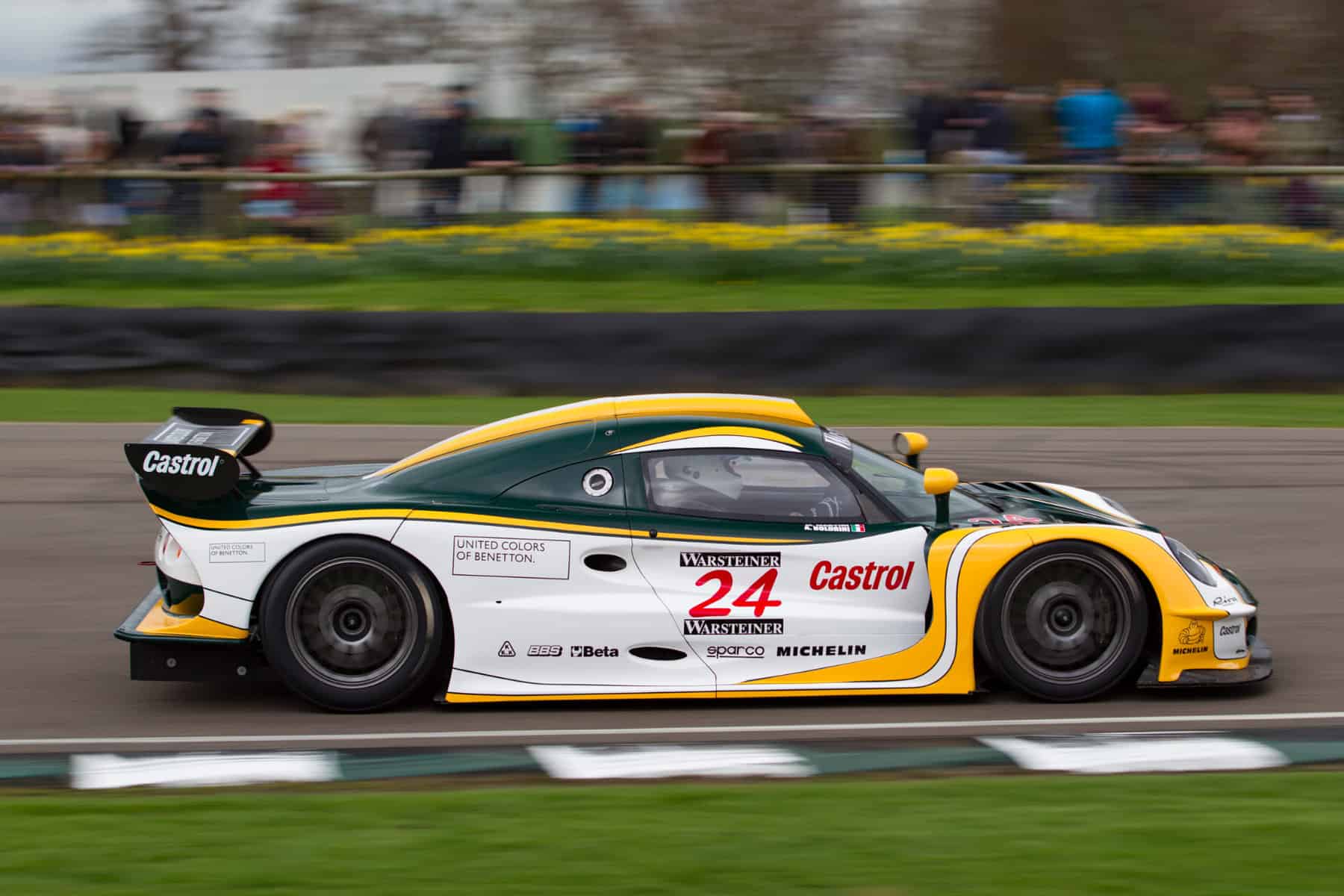Lotus Elise GT1
"Single-handedly responsible for the survival of the British sports car manufacturer"
BY: WOUTER MELISSEN
This year, after a run of twenty-five years and with three distinct series, production of the Lotus Elise will finally end. Named after the granddaughter of Romano Artioli, who was the chairman of Lotus and Bugatti at the time, the Elise is single-handedly responsible for the survival of the British sports car manufacturer.
During the last quarter of a century, the Elise formed the basis for a wide variety of vehicles, which included the minimalist 340R but also the original Tesla Roadster. The most extreme of all was undoubtedly the GT1 competition car of 1997. It was raced for just a single season by four different teams for which three distinct engines were built. All this makes for a particularly colorful history.
The GT1 class had been introduced a couple of years earlier to spearhead the resurgence of production-based GT racing. These cars were initially raced in the BPR Global GT Series, which started out as a championship for gentleman racers but quickly attracted manufacturer interest and by 1997 was known as the FIA GT Championship. During the first few seasons, the cars running in the GT1 class were modified production sports cars like the Ferrari F40, McLaren F1, Porsche 911, and Lotus Esprit. The homologation requirements to qualify for GT1 were gradually changed from twenty-five road-legal examples to just a single road car. Not surprisingly, this opened the door for manufacturers to create a racing car from scratch and then build a single road-legal example.
Among the cars to fall victim to this rapid rate of development was the new-for-1996 Lotus Esprit GT1. It was competitive halfway through the season, with the Jan Lammers and Chris Goodwin driven example qualifying on pole position for the Nürburgring round in June. Months later, the all-new Porsche 911 GT1 was introduced and the bar was raised out of the Esprit’s reach. The German machine was in reality only half a 911. Aft of the rear bulkhead, the car consisted of a purpose-built spaceframe chassis that housed the twin-turbo flat-six. To underline just how different this 911 was from any of the road cars, this engine was actually mounted ahead of the rear axle instead of the familiar position behind it. The 911 GT1 won three of the four races it competed in during the 1996 season.
Basing the next generation GT1 car on the Lotus Elise did not seem like the most obvious idea. The diminutive four-cylinder engine powering the production car was hardly a match for the twin-turbo flat-six of the Porsches or the large naturally aspirated V12 engines powering the McLaren F1 or the upcoming Mercedes-Benz CLK GTR. Fortunately, the regulations were such that Lotus virtually had a free choice of engines. What the British manufacturer chose to do was continue with the twin-turbo V8 engine that was derived from the Esprit V8 road car unit and had also powered the GT1 that raced during the 1996 season.
What the Elise did have going for it was its sophisticated aluminum spaceframe chassis. This was constructed from anodized aluminum extrusions that were bonded together to form a lightweight and very strong chassis. These extrusions were formed by pressing solid aluminum sections through a die, which was a straightforward and relatively cheap construction method. The chassis were built for Lotus by the automotive department of Swedish specialist Hydro Aluminium. The bonded aluminum spaceframe was literally the backbone of the success of the Elise and was used for all the versions and evolutions during the car’s twenty-five-year production run.
Led by George Howard-Chappell, the engineering team started with the production car chassis when developing the new GT1 racer. Code-named the Type 115, it was built as a racing car first but to meet homologation requirements a nearly identical road car was also created.. For safety reasons, a tubular steel roll-over structure was fitted, which also added further rigidity to the chassis. The suspension was also modified for racing purposes with all the rubber removed to make for solid mountings. The suspension itself consisted of lower wishbones with top rockers that actuated the Penske coil springs and dampers. Stopping power was provided by carbon-fiber ceramic brakes on all four corners.
In the area that had originally been reserved for the transversely mounted, Rover K-series engine, the Lotus engineers squeezed in the Type 918 V8. Mounted longitudinally, this compact engine had been developed in-house by Lotus. The all-aluminum unit had four valves per cylinder and displaced just over 3.5 liters. It was fitted with a pair of turbos, fuel injection and Lotus Racing’s proprietary engine management system. Fitted with the mandatory intake restrictors, the competition version of the Type 918 produced well over 550 hp. It was mated to a six-speed sequential gearbox that was sourced from specialists Hewland.
Larger in every dimension than the road-going Elise, the new GT1 racer needed purpose-built bodywork. This was penned by Julian Thomson, who had also been responsible for the design of the regular production Elise. The GT1 body was exactly what it looked like, a lower, wider and longer version of the Elise. Just how much wider it was, was most evident in the gap between the trailing edge of the front fenders and the doors. Among the aerodynamic aids were a full width front splitter, a rear diffuser and big wing mounted on the rear deck. Instead of fiberglass, the competition car bodywork was made of lighter and more importantly stronger carbon-fiber composites. The front and rear body were single-piece “clam-shells” for easy access.
Following a six-month development period, the Elise GT1 was officially revealed at Ketteringham Hall on November 21st, 1996. For the next racing season, an ambitious program was announced that included the FIA GT Championship as well as an entry in the 24 Hours of Le Mans, where GT1 cars had a good chance of taking the outright victory. Howard-Chappell was adamant that Lotus was in it to win it. This was perhaps somewhat overambitious considering Lotus Racing’s budget was so limited that there were no funds for full-scale wind-tunnel tests. Instead, the British manufacturer went straight to on-track testing.
Sadly, the Elise GT1 became collateral damage of a political game between the major manufacturers. The likes of Mercedes-Benz, McLaren, and BMW were so worried about the performance of the new 911 GT1 that they strong-armed governing body FIA. With the threat of pulling out, they managed to convince the FIA to mandate smaller restrictors for turbocharged engines. Unfortunately, that not only slowed down the 911 GT1 but also the new Lotus Elise. Franco Meiners, whose GBF team ran two Elise GT1s in 1997 explained: “At the opening race of the season, our cars had about as much power as a GT2 specification 911.” That was at least a 100 hp down on the planned 550 hp.
While the restrictor size change came relatively late, the other teams that planned on running the Elise GT1 opted for an alternative, naturally aspirated engine. This was a four-cam V8, based on the LT5 Corvette engine that Lotus had developed while it was owned by General Motors. In competition trim, it had a slightly smaller bore but longer stroke. The net result was a displacement increase from 5.7 liters to just under 6.0 liters. Hastily developed, this Corvette-based unit was rated at just over 600 hp. It arrived so late that it could not be properly tested, so the Lotus Elise GT1s would start the 1997 season with either an underpowered or untried engine.
In addition to one of the Italian-run GBF Elises, the entry list for the season opener at Hockenheim also included three Corvette-engined examples. All three were entered under the works-backed GT1 Lotus Racing team with two of the cars run by the Dutch team of Mike Hezemans and a third by the First Racing Project squad. It was an absolute disaster as the cars were off the pace and none reached the finish with all four cars succumbing to an alternator failure. In qualifying, the fastest of the four Elises had been well over four seconds slower than the pole-sitting Mercedes-Benz and close to two seconds slower than the quickest of the 911 GT1s. For the pre-qualifying at Le Mans only the three works cars showed up, with the fastest example setting the fourteenth time in a sixty-eight-strong field.
Determined to make the most of his Elises, Meiners called in the local experts to help improve the GT1 machines: “Dallara helped modify the aerodynamics and further strengthened the chassis.” He continues: “We also switched from Garrett to KKK turbos and modified the injection.” One weak spot he could not address was the electronics: “Although it was Italian built, it was created exclusively for Lotus and only Lotus could access it.” Among the most fascinating changes made was the adoption of a rear wing that had originally been developed for the never-raced Ferrari F50 GT. Meiners even went as far as having a 2.8-liter version of the twin-turbo V8 developed in consultation with some engineers he knew at Ferrari. This could be run with larger turbos and potentially produce more power than the larger, original engine. In the end, the 2.8-liter engine was never used.
The development work initially did pay off: At third round of the FIA GT Championship in Helsinki, the GBF Elises were the fastest of the five cars entered and also the most reliable. The #24 GBF car started the race in tenth and finished a commendable fifth. As it turned out, this was the best result for the Elise all season. Reliability issues continued to dog the Corvette-powered cars while the GBF Elises continued to struggle with a lack of power despite all the improvements. Two other teams would also enter Corvette-engined Elises that season but, not surprisingly, they could do no better than the works-backed cars. In the final standings, the GBF team placed eighth with just two points. The other teams did not even appear as all of the Corvette-engined Elises were disqualified as it[already used this construction “as” a few words ago] had only been homologated in its original, twin-turbo guise. Meiners: “We ourselves homologated and crash-tested the cars. This included a front- and side-impact test at an expense of 500,000 Lire.”
After the 1997 season, the Elise GT1 program was curtailed. Hezemans, however, was nevertheless not quite done with the Elise as he was convinced that the chassis had more potential than displayed during the 1997 season. His team used the bonded aluminum chassis to create what he called the Bitter GT1. Exactly why he used the name of the long-dormant German manufacturer, we do not know. The car sported a brand-new body that had a sharper nose and longer tail. Underneath the rear deck sat the mighty V10 engine, which Hezemans had some experience with, powering the Dodge Viper GT2 cars. Ready for the start of the 1998 season, the two Bitters were only raced once, at the Silverstone FIA GT race in May. Neither car finished the race due to reliability issues. They were entered again at Hockenheim the next month but issues in practice meant that neither started the race. Since then, one chassis has been returned to Lotus configuration while the other still exists in Bitter guise and was recently restored.
It was not quite the end of the Lotus Elise GT1 competition career. One of the Corvette-engined examples was dusted off and entered in the LMP1 class of the 2004 Sebring 12 Hours. It was now considered a GTP or Grand Touring Prototype, so there no longer were any homologation concerns. Fielded by Team Elite, it was driven by Jay Cochran, Damien Faulkner, and Ed Zabinski. The green and yellow Elise qualified 20 seconds off the pace in thirty-fifth place and was eventually classified forty-third following a transmission failure. The car was forced to retire before the first driver change, so only Cochran got to drive in the race. It was a suitably inconspicuous epilogue to the Elise GT1’s racing career.
Lotus Racing built seven Elise GT1 racers and a single road car to meet the homologation requirements. We will never know if the car could have been competitive had proper funding been available for its development and had it not been neutered for political reasons before it even turned a wheel in anger. What is an undeniable fact is that every FIA GT race in 1997 was won by a naturally aspirated engine; not even a company with the expertise of Porsche could find a way to work with their muzzled turbocharged engines.











